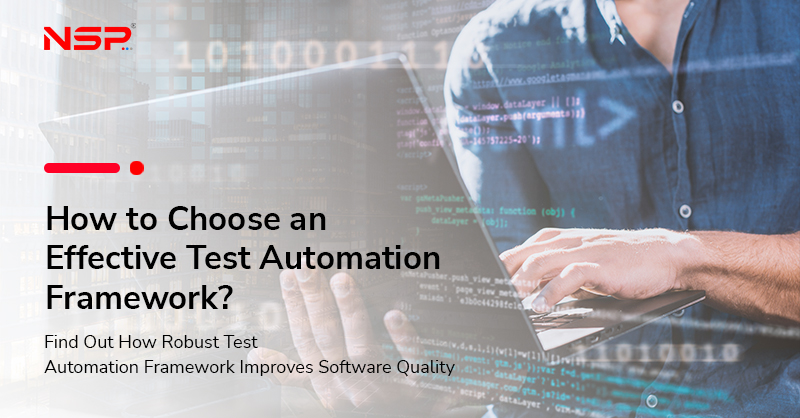2023-2030 manufacturing applied technologies trends to watch
admin
October 23, 2023
Manufacturing

The manufacturing industry plays a crucial role in driving economic growth, job creation, innovation, and overall societal development in a country. The manufacturing industry is constantly evolving, driven by changing demands and the technological advancements that shape the way products are designed, produced, and distributed. In spite of incorporating changes, the manufacturing industry faces several challenges and problems that impact its efficiency, productivity, and overall growth.
In this blog, we delve into the challenges that plague the dynamic world of manufacturing and identify some technology trends that are reshaping the industry. Some of the latest technology trends include groundbreaking innovations to transformative processes. These technological revolutions hold immense potential for growth, efficiency, and competitiveness. Let us also explore the cutting-edge technologies that are driving this evolution.
Challenges
When it comes to industry, manufacturing is one of the most challenging, because of the high costs involved, the need for skilled workers, and an ever-tightening and changing market.
Manufacturing companies face many challenges every day. According to a new study conducted by Vanson Bourne of GE Digital that covered a wide cross-section of industries including the Field service and IT sector, manufacturing, medical, oil and gas, energy and utilities, and transportation major challenge is by far unplanned downtime.
Of the 82 percent of companies that have experienced unplanned downtime that lasted an average of four hours and cost an average of $2 million. Unplanned downtime results in loss of customer trust and productivity for industries where 46% couldn't deliver services, 37% lost production time, and 29% couldn't service specific assets.
However, the silver lining is that the same study also found that unplanned downtime is also driving renewed investment in digital transformation.
Some of the current problems in the manufacturing industry also include:
Supply Chain Disruptions in the availability of raw materials, components, and finished goods, impacting production schedules and causing delays.
Shortage of Skilled Labor: The skills gap significantly challenges the industry's ability to innovate and remain competitive.
Environmental sustainability: Increasing pressure to reduce the industry's environmental impact and transition to more sustainable practices.
Cybersecurity threats: As more manufacturing processes become digitized and connected through the Internet of Things (IoT), the industry becomes more vulnerable to cyber-attacks.
Cost and Resource Management: Fluctuating raw material prices, energy costs, and increasing competition make it challenging to maintain profitability.
Rapid Technological Changes: Keeping up with the pace of technological change and adopting new technologies can be difficult and costly.
Global Competition, Regulatory Compliance and Changing Consumer Demands also contribute to the complexity of the manufacturing industry.
Addressing the Challenges
Addressing these challenges requires collaboration between manufacturers, governments, and other stakeholders. Strategies such as investing in workforce development, embracing digital transformation through advanced technologies/ Industry 4.0 and Blockchain technology, fostering innovation, Optimizing Energy Consumption, Demand forecasting, enhancing supply chain resilience, encouraging sustainable manufacturing, and enhancing safety and risk management can help overcome these problems and drive the growth of the manufacturing industry.
Advanced technologies/ Industry 4.0
The Fourth Industrial Revolution or Industry 4.0 is creating a digital manufacturing firm that is connected. It supports communication, analyses, and the use of data to motivate more intelligent action in the real world. It powers the physical act of designing, production, distribution, and performance in a continuous cycle.
Why is Industry 4.0 gaining popularity?
Artificial intelligence (AI), the Internet of Things (IoT), and other cutting-edge technologies have helped to close the gap between the virtual and physical worlds to build an interoperable platform between information technology (IT) and actual physical activities.
The technologies listed below have had a favorable impact on industrial manufacturing.
Artificial Intelligence and Machine learning
Predictive Maintenance: AI and ML algorithms can analyze real-time sensor data from manufacturing equipment to identify patterns and anomalies. Manufacturers can schedule maintenance activities by detecting early warning signs of equipment failure.
Supply Chain Optimization: AI and ML can optimize supply chain operations by forecasting demand, managing inventory levels, and optimizing logistics. These technologies can analyze historical data, market trends, and external factors to provide accurate demand forecasts, ensuring manufacturers maintain optimal inventory levels and minimize stockouts or overstocks.
Production Optimization: AI and ML algorithms can analyze production data to identify bottlenecks, optimize production schedules, and improve overall efficiency. By leveraging real-time data, manufacturers can optimize machine settings, adjust production parameters, and allocate resources effectively, leading to increased productivity and reduced waste.
Energy Efficiency Management: AI and ML can help optimize energy consumption in manufacturing facilities. By analyzing energy data and equipment usage patterns, these technologies can identify opportunities for energy savings, optimize energy distribution, and suggest energy-efficient practices. This not only reduces costs but also contributes to sustainability efforts.
Demand Forecasting: Accurate demand forecasting is crucial for manufacturers to optimize production, manage inventory, and meet customer requirements. AI and ML techniques can analyze historical sales data, market trends, weather data, social media sentiment, and other relevant factors to predict future demand more accurately. This enables manufacturers to make informed decisions and align production accordingly.
Safety and Risk Management: AI and ML can enhance safety in manufacturing environments by analyzing sensor data, video feeds, and employee behavior to detect potential safety hazards. These technologies can alert operators to unsafe conditions, identify patterns that lead to accidents, and provide insights for preventive measures. This helps create a safer work environment and reduce workplace accidents.
Autonomous Vehicles and Robotics: AI and ML play a significant role in enabling autonomous vehicles and robots in the manufacturing industry. Self-driving vehicles can be used for materials handling and logistics within manufacturing facilities, improving efficiency and reducing human error. Additionally, robots powered by AI and ML can perform complex tasks such as assembly, picking, and packing, enhancing productivity and precision.
IIoT Platforms
Operationalizing Data Insights: Curate Operation Insights with Data Platforms such as NS Envision, through the following steps.
- Consolidate operational DATA from disparate sources in the NS Envision Platform and tailor it fit-for-purpose.
- Incorporate Real-time drill down dashboards for operations with NS Envision Dashboard
- Customize KPIs as needed to address specific use cases.
- Integrate operational data with Business Data
- Deploy big data tools (e.g., Data warehouses, lakes, and business intelligence tools) for predictive and advanced analytics.
- Validate insights from specialized solutions and big data tools with Event Frames by Operationalizing
- Insights in the NS Envision.
Industrial Automation
Streamline operations and reduce human intervention by integrating technologies such as robotics, artificial intelligence, machine learning, and the Industrial Internet of Things (IIoT) to deploy automation in manufacturing.
How NSP Predictive Engineering Analytics Platform?
A software solution that uses advanced analytics to analyse data and predict the performance, reliability, and maintenance needs of systems, by integrating data from sensors, simulations, and historical records to provide actionable insights. It utilizes machine learning algorithms and statistical models, to identify patterns and anomalies, to forecasts future behaviour.
Key features and capabilities include data visualization (Dynamic time Series KPI, OEE), cognitive computing, Data Integration, Analysis, and predictive modelling, Simulation with Alerting and reporting.
NSP predictive engineering analytics platform enables organizations to harness the power of data and analytics to optimize engineering processes, enhance product performance, and drive innovation in various industries, including manufacturing, Oil and Gas, Chemicals, Energy and Utilities, Pulp and Paper, Pharma and more.

How an Industrial Automation solution enabled real-time monitoring and control of machines through a remote Operations Command Center
Customer Connect 360
The Remote Operations Command Center was devised to enable real-time monitoring and control of machines from multiple locations across the globe through a command center video wall. The Command Center remotely tracks, assesses, and resolves issues, 24/7 resulting in reduced asset downtime with prompt actions thereby optimizing operations.
Key features include:
- Continuous monitoring of the machines and their replacements with insight into the life of the components.
- Preventive maintenance schedule tracking via the Command Centre.
- Spares follow-up and status update.
- Service follow-up with feedback.
- New features and kit campaign along with Sales campaign.
Value to Customer
- Enable Spares and Service Business by integrating ERP with e-Spares and e-Service.
- Technical insight of the machines
- Digitally enabled Proactive Services
- Improve the reliability of the machines.
In Nutshell
The manufacturing industry is experiencing profound changes propelled by technological advancements, shifting consumer expectations, and the dynamic global market landscape. These are revolutionizing conventional practices and creating opportunities for enhanced operational efficiency, sustainability, and adaptability.
In response to these trends, NSP has strategically developed its products and solutions to harness the power of technology, enabling organizations to create a digital roadmap and make real-time, data-driven decisions for advanced operations using the Industrial Internet of Things (IIoT). Contact our experts at reachus@nsplustech.com to find out more about our NS Envision IoT platform capabilities with emerging technologies.
Previous Post
NSP’s thrust technologies for 2023 recruitment strategy
Recent News artical
Fresh job related news content posted each day

October 23, 2023
Digital Transformation as a service
Today Digital Transformation As a Service (DXaaS) is a popular choice for...
Read more
October 23, 2023
Securing financial services: Role of MFA Verification
As per the projections, cybercrime is predicted to cost the global economy...
Read more
October 23, 2023
How to choose an effective test automation framework?
In today's fast-paced software development industry, having a reliable and efficient automation...
Read more